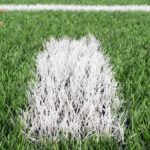
The fall protection system must be safely used and properly maintained. Many types of equipment have certain standards for maintaining and using it. Some of the fall protection systems used for industrial purposes are rails, lifelines, safety harnesses, fall arrest device and lanyard, anchorages, fittings, and connectors. Maintenance in the whole covers the requirement for maintenance, storage, inspection, cleaning and servicing the equipment. In this blog, let us discuss the inspection schedule for height safety equipment. If you are using height safety equipment in your industry then this blog will be very helpful.
Tips for height safety inspections:
Personal equipment like harness, connectors, lanyards, fall protection devices and other common devices must be inspected before using it. If possible inspect the above-mentioned equipment after using it also. The personal equipment must be checked first as part of height safety inspections. It is usually performed by a safety inspector or some knowledgeable person in this field.
Slings, ropes, external inspection of fall arrest devices, equipment associated with harness and lanyard must be inspected once in six months. The above-listed items must be inspected only by the height safety equipment inspector.
Drilled anchorage, fixed anchors and all other types of anchors must be inspected once in 12 months or as per manufacturer’s requirement but it should be a maximum of 5 year period. If it is not specified then follow a 12 month inspection period. All types of safety anchors must be inspected by the height safety equipment inspector.
Full service of fall arrest devices must be as per the manufacturer’s requirement but it should be a maximum of 5 year period. If it is not specified then it must be serviced once in 12 months. Fall arrest devices must be serviced by the height safety equipment inspector.
Rails, steel ropes, vertical and horizontal lifelines must be inspected as recommended by the manufacturer. But the maximum period should be less than 5 years. If the manufacturer has not specified any time period then it is better to inspect the above-mentioned items once in a year. Lifelines, ropes, and rails must be inspected by the height safety equipment inspector.
Fibre rope or the web of the lifelines must be inspected once in 12 months by the height safety equipment inspector.
If the items have stressed because of the fall then all that items must be inspected before using it for the next time. It must be inspected by the height safety equipment inspector. Harsh and heavy force items must be inspected frequently for ensuring safety. Try to document the report of all inspection for future use.
Maintain a separate record sheet for all the items. The inspection and maintenance history must be noted in that recording sheet. The users or the operators must check the record sheet before using the equipment. Some of the important details that must be noted in the record sheet are purchase date, last service date, manufacturer’s name, serial number or batch number, manufactured year, details related to the connection of harness, anchorage types that can be used and limitations and suitability of different usage.






